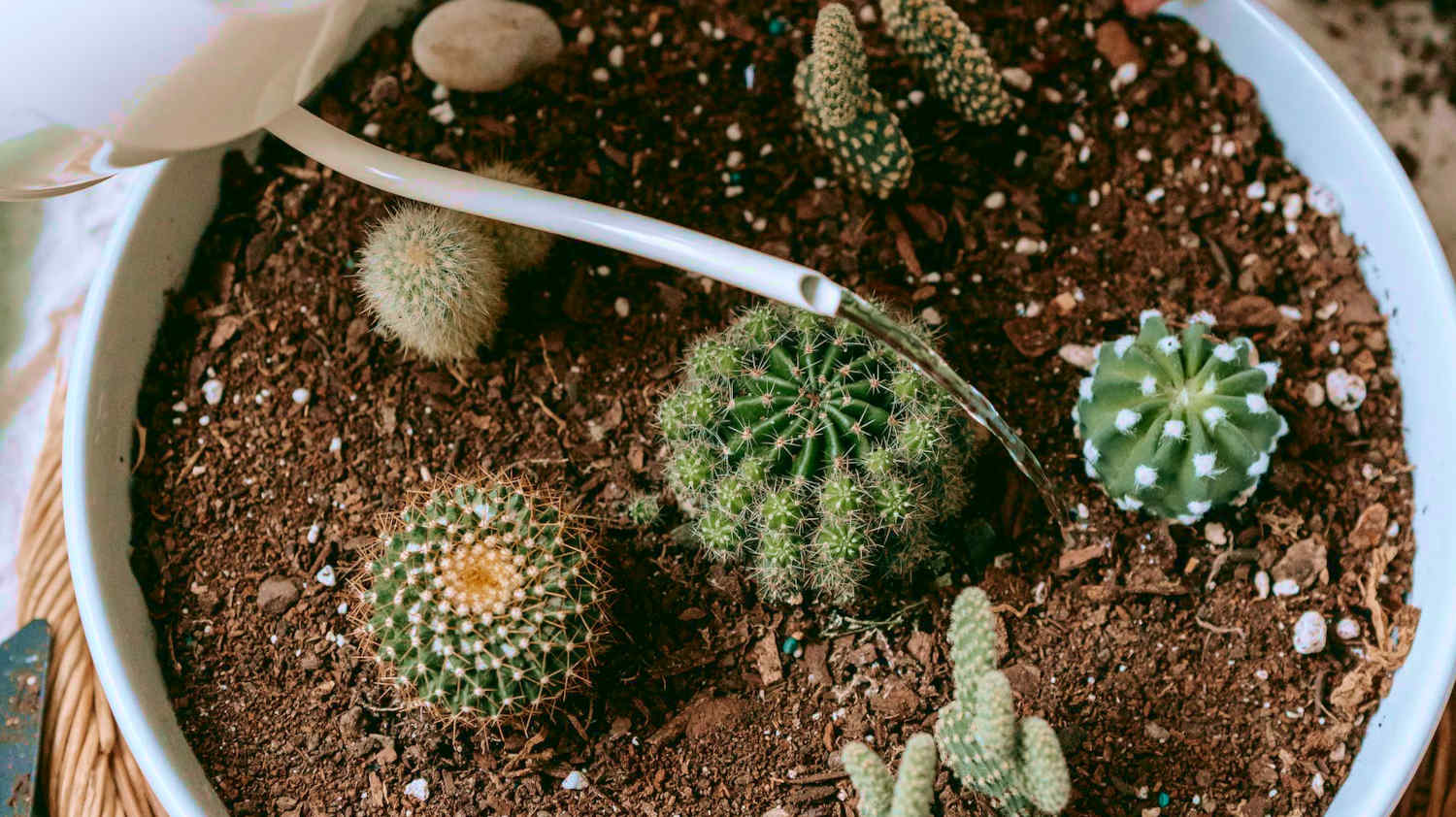Overwatered Cactus
Cacti may be known to be tough, desert-dwelling plants, but they can hit a bit of a rough patch if we drown them in too much water. Let’s dive into the signs of waterlogging an overwatered cactus, and what we can do to save our overwatered cacti.
Signs your Cactus Might Be Waterlogged

1. Yellowing and Softening of the Stem – One of the first indicators of overwatering is the yellowing and softening of the cactus stem. This happens as the cells fill up with too much water. It’s like your cactus is saying, “Hey, I am way over hydrated here!”
2. Root Rot and Foul Odor – Overwatering often leads to root rot, a serious condition that can lead to the death of your cactus. Inspect the roots for a dark, mushy appearance and a foul smelling odor.
3. Black or Brown Spots on the Cactus – Presence of black or brown spots, especially on the base of the cactus, indicate tissue damage caused by excess moisture. These spots can spread quickly, leading to further damage if not addressed promptly.
4. Wilting Despite Moist Soil – Ironically, an overwatered cactus may display signs of drooping and wilting, even though the soil is still damp as the roots struggle to absorb nutrients due to damage caused by excessive moisture.
This last sign is where many beginners go wrong. They assume the sagging exhibited by their potted cactus is a sign that they should water more, when they should in fact be watering less!
Saving your Overwatered Cactus
1. Assess the Extent of Damage

The first step is to assess the extent of the damage inflicted by overwatering. Gently remove the cactus from its pot, taking care not to further disturb the roots. Examine the roots for signs of rot, which may look like dark, mushy spots.
2. Pruning Affected Areas

Once you’ve identified the affected regions, use sterilized pruning shears or a knife to trim away the mushy or discolored stems. Be thorough but cautious in pruning to avoid unnecessary stress on the cactus.
3. Let the Cactus Dry
Find a dry, shaded location where the plant can recover undisturbed. Placing the cactus in an area with good air circulation encourages the evaporation of excess moisture from both the stems and the soil.
4. Repotting the Cactus

Once the cactus has undergone the drying process, it’s time to consider repotting. Choose a well-draining soil mix or enhance regular soil with a high-draining amendment to improve drainage. Select a pot of appropriate size, ensuring it provides ample space for root development.
When transferring the cactus to its new home, be gentle to avoid root damage. Allow the plant some time to acclimate to its new environment and give it a few days before resuming regular watering routines. If the soil seems at all damp, do not water until the soil is completely dry or you’ll end up right back in the overwatered situation all over again.
Prevention Tips to Avoid Overwatering

- Understand Your Cactus Species – Research your cactus’ watering needs, considering factors such as its natural habitat conditions and drought tolerance.
- Establish a Watering Schedule – Tailor the watering frequency to your cactus type, adjusting for different seasons. Avoid a fixed schedule and pay attention to the plant’s needs.
- Use Well-Draining Soil – Select a cactus mix such as Spike & Bloom’s: High-Drainage Desert Blend Cactus mix to improve drainage, preventing water from accumulating around the roots.
- Monitor Environmental Factors – Adjust your watering routine based on humidity levels and protect your cactus from excessive rainfall if it is outdoors.
- Observe the Signs of Thirst – Learn how your cactus responds to dehydration. Timing your watering based on the plant’s needs ensures a happy, thriving plant.
Rescuing an overwatered cactus requires diligence and a lot of effort, but with proper care and attention, these tough plants can bounce back to health. By recognizing the signs of overwatering, making quick decisions to save your cactus, and putting in place some preventive measures, you can ensure your cactus thrives in and around you home. Remember, a healthy cactus is a happy cactus!

